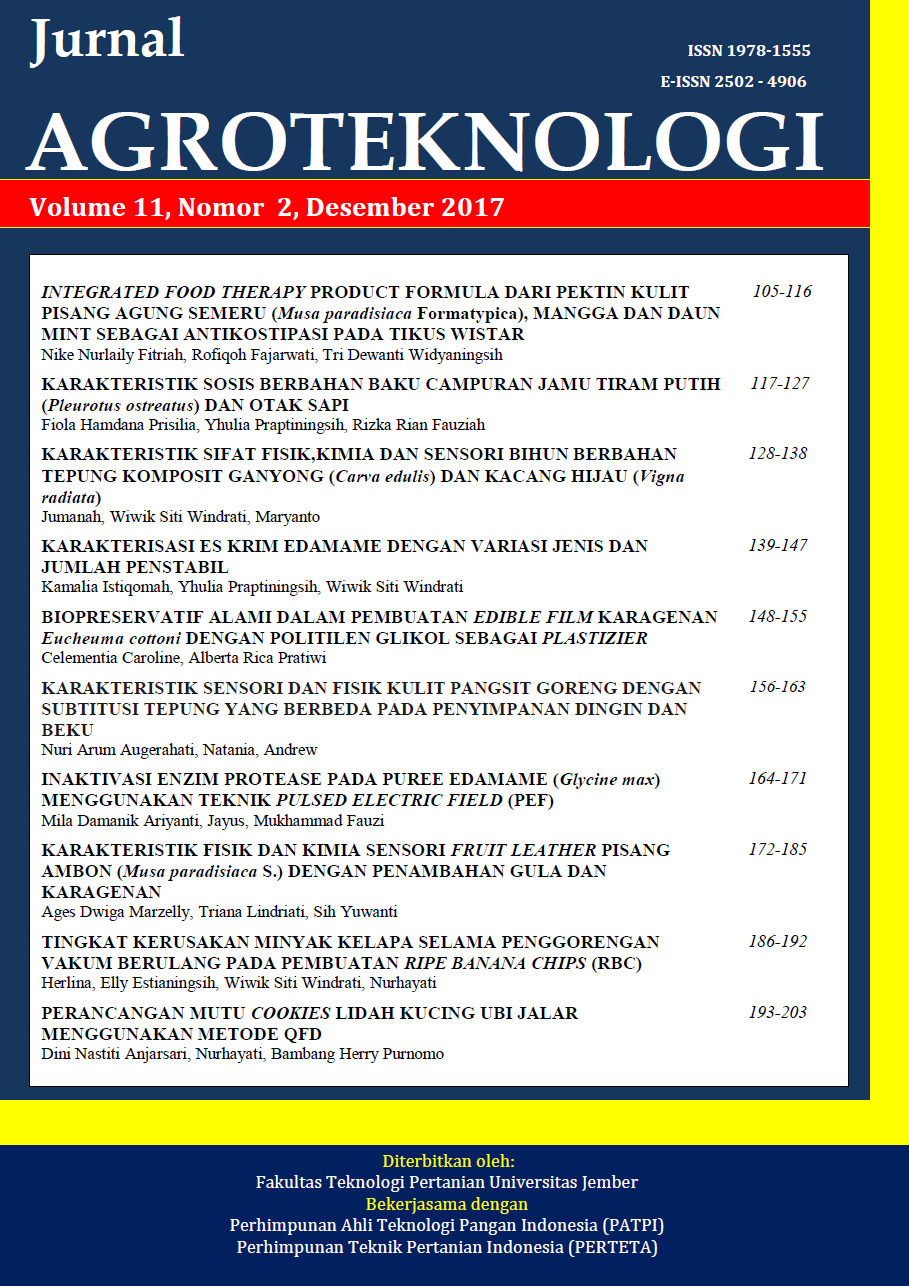INAKTIVASI ENZIM PROTEASE PADA PUREE EDAMAME (Glycine max) MENGGUNAKAN TEKNIK PULSED ELECTRIC FIELD (PEF)
DOI:
https://doi.org/10.19184/j-agt.v11i02.6525Abstract
Edamame (Glycine max) is easily damaged due to suspected enzyme content and microbial activity, so the ingredients must be consumed directly after blanching process. Selling value of rejected edamame is very low while the nutritional content is still quite good. To increase the edamame selling value, an alternative processing is needed which could maintain the edamame shelf life. The alternative way is creating edamame puree which has a longer shelf life without damaging the characteristics of edamame puree. Preservation of edamame puree was done by enzyme inactivation using Pulsed Electric Field (PEF) method. The results showed that PEF treatment could inactivate protease enzyme up to 88,5%, microbe 80-89%, antioxidant activity 44,5% and color 2,43%. The activity of edamame protease enzymewas significantly decreased at 45 kV voltage treatment; 30 seconds (0.38 mMol/minutes). Total microbial in puree edamame significantly decreased at 40 kV voltage treatment; 10 second (2,849 log Cfu / ml) and 40 kV voltage control; 20 second; 40 kV; 30 second; 45 kV; 10 second; 45 kV; 20 second; And 45 kV; 30 second (not growing). Antioxidant activityof edamame puree after PEF treatment was significantly decreased at 45 kV; 30 seconds (5.43%). In addition, treatment of PEF also maintains the hue angle puree edamame color remains in a yellowish greenish marked by a fixed value of susceptible 126 – 162. The value of hue angle edamame puree before and after PEF treatment ranged from 153.76 - 150.02.
Keywords: edamame, puree edamame, protease enzyme, PEF technique
Downloads
Downloads
Published
Issue
Section
License
Jurnal Agroteknologi has CC-BY-SA or an equivalent license as the optimal license for the publication, distribution, use, and reuse of scholarly work. Authors who publish with this journal retain copyright and grant the journal the right of first publication with the work simultaneously licensed under a Creative Commons Attribution-ShareAlike 4.0 International License that allows others to share the work with an acknowledgment of the work's authorship and initial publication in this journal.
 JURNAL AGROTEKNOLOGI
JURNAL AGROTEKNOLOGI 








.png)
